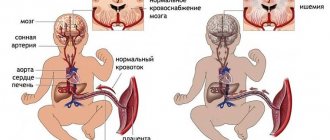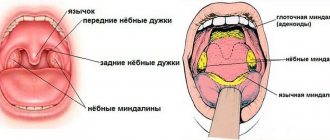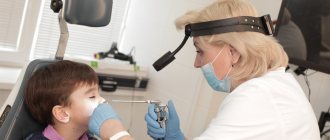Infectious disease specialist
Sinitsyn
Olga Valentinovna
33 years of experience
Highest qualification category of infectious disease doctor
Make an appointment
Diphtheria is a dangerous infectious disease, the mortality rate of which reaches 50%. For a long time, thanks to mass vaccination, this infection was considered completely defeated, but its outbreaks are still recorded in different countries, including developed ones. In recent years, due to the increase in incidence, diphtheria has been discussed again. According to WHO, in 2021, 16.5 thousand cases of diphtheria were recorded worldwide. In Russia, the epidemiological situation is still under control, because 97% of the population has been vaccinated. However, an increase in morbidity due to the refusal of some parents to vaccinate their children is also observed in our country.
The causative agent of diphtheria. Methods of transmission
The causative agent of diphtheria is the bacterium Corynebacterium diphtheria, which was first discovered and described by Edwin Klebs in 1883. The diphtheria bacillus is quite resistant to external factors. She can live for weeks: in saliva and water - two, in milk - three, in dust - up to five. Of particular danger to humans is its toxin, to which almost all organs of the human body are sensitive, but most of all the heart, kidneys, adrenal glands, and nervous system. The poison blocks protein synthesis in cells, which causes dangerous functional and structural changes that lead to death. The toxin acts both locally and systemically if it enters the blood and lymph. In severe cases, it can cause myocarditis or peripheral neuropathy, but most often the patient has trouble breathing due to the accumulation of dead tissue in the throat and tonsils.
The diphtheria bacillus is transmitted from an infected person in different ways:
- airborne;
- contact-household (this method of transmission is more common in hot countries where the cutaneous form of diphtheria is present; in temperate latitudes it is extremely rare);
- through food.
The more pronounced the course of the disease, the more bacteria the patient releases into the environment. But infection is also possible from a completely healthy person who is a carrier of the pathogen. However, the contagiousness of diphtheria is not as high as, for example, measles. Out of ten people in contact with the patient, only one or two can become infected.
Diphtheria has the following periods:
- incubation (2-10 days);
- the height of the illness;
- recovery (in the absence of treatment, death cannot be ruled out).
Preventive measures
Newborns gradually develop immunity. The task of specialists is to help them with this. Vaccination is the only effective method to prevent complex manifestations of diphtheria.
Preventive measures include:
- regular vaccinations from birth;
- isolation of patients upon detection;
- identification of carriers among family members and close relatives.
The first injection of the vaccine is recommended at 3 months from birth. A weakened toxin is injected. It is administered 3 times with one and a half month breaks. Repeated vaccination is carried out at 2, 7 and 14 years. The pediatrician, if there is reason, can administer more gentle drugs ADS-M-anatoxin or AD-M-anatoxin with an individual dosage schedule.
After the vaccine is administered, a rise in body temperature, slight weakness and a red dot at the injection site are observed.
Classification of the disease
Diphtheria is classified according to several criteria.
In terms of prevalence, the disease can be localized, when one organ is affected, and widespread, accompanied by larger-scale lesions.
The following forms differ in localization and toxicity:
- diphtheria of the oropharynx (frequency – 92%):
- localized - catarrhal, island and film;
- widespread - plaque extends beyond the oropharynx;
- subtoxic, toxic (3rd degree of toxicity), hypertoxic, hemorrhagic;
- localized, manifested by inflammation of the larynx;
- common - inflammation extends beyond the larynx and invades the trachea;
- descending - in addition to the larynx and trachea, damage to the bronchi is noted;
Effectiveness of vaccination
Diphtheria toxoid in combination with tetanus-pertussis (TTP) vaccines has been used in the WHO Expanded Program on Immunization (EPI) since its inception in 1974. During the period 1980-2000. The total number of reported cases of diphtheria has been reduced by more than 90%. Introduction in 1994 of mass immunization of the Russian population against diphtheria with repeated revaccination of adults in 2003-2004. made it possible to provide sufficient specific protection of the population from this infection. This, together with many years of surveillance, led to a decrease in the incidence of diphtheria in Russia from 26.8 in 1994 to 0.01 per 100 thousand population in 2009-2011. The effectiveness of modern vaccines is 95%. The World Health Organization recommends vaccination for all countries of the world without exception.
Diphtheria symptoms
In temperate latitudes, oropharyngeal diphtheria is most common. The symptoms initially resemble a sore throat. The disease begins with fever and weakness, in addition the following symptoms are observed:
- swelling of the mucous membrane of the oropharynx and neck;
- gray-white plaque on the tonsils;
- enlargement of the submandibular and cervical lymph nodes.
In a localized form, the plaque does not extend beyond the tonsils, the intoxication is not intense, and the pain when swallowing is not very acute. If the patient has a strong immune system, recovery is possible even without the administration of anti-diphtheria serum, but the disease is fraught with serious complications.
The most common form of diphtheria is the membranous form, in which the plaque on the tonsils looks like a dense film with clear edges. When you try to remove it with a spatula, the tonsils begin to bleed. The throat swells and hurts very much. The wider the spread of plaque, the more intoxication of the body is manifested.
Toxic diphtheria is dangerous. Without timely administration of serum, it turns into hypertoxic or hemorrhagic forms. In the toxic form, the disease develops very quickly, the temperature rises sharply to 40 °C. Symptoms of general intoxication are clearly expressed: severe weakness, headache, pain in the throat and neck, and sometimes in the stomach. The dirty-gray plaque thickens after 2-3 days and completely covers all the tonsils, arches, soft and hard palate. Breathing becomes difficult even through the nose, and the neck swells greatly. You can feel a sweetish-sweet odor from your mouth.
With the hypertoxic form of diphtheria, intoxication increases even more. The patient periodically loses consciousness and experiences convulsions.
In the hemorrhagic form, there are extensive hemorrhages, bleeding from the nose, gums, and digestive organs. Death occurs within 2-3 days due to asphyxia (films block breathing), heart failure, damage to the kidneys and nervous system, or paralysis of the respiratory muscles.
Are you experiencing symptoms of diphtheria?
Only a doctor can accurately diagnose the disease. Don't delay your consultation - call
When to see a doctor
Detection of the first signs of diphtheria in a child is a reason to consult an infectious disease immunologist. Our center is located in the center of Moscow and if symptoms of diphtheria are detected in children, our specialists will provide qualified assistance.
To make an appointment, simply fill out the form on the website by clicking the “make an appointment with a doctor” button. You must include your name and contact information. Specialists will contact you as soon as possible. You can call yourself at +7 (495) 995-00-33.
Damage to the nasopharynx will require consultation with specialists. For quality treatment of diphtheria, an infectious disease immunologist will recommend the necessary specialists - an ENT specialist, a neurologist, a cardiologist and a urologist. All doctors are located in the center of Moscow in one building and there is no need to travel.
Complex cases of diphtheria in children require emergency care. If symptoms are severe and there is a high temperature, you should call an ambulance.
The presence of symptoms of diphtheria in children to contact our ambulance:
- heat;
- fever;
- labored breathing;
- loss of mobility.
These cases require urgent measures. Delay in acute diphtheria in children can make treatment difficult.
The main causes of diphtheria in children are various factors. You should not identify them yourself, as this may affect the condition of the parents and others in contact with the child.
Diagnosis of diphtheria
If a characteristic fibrous plaque appears on the tonsils and in the nasal cavity, laboratory diagnostics are used to identify the diphtheria bacillus. The following tests are performed:
- a general blood test indicating the presence of an acute inflammatory process;
- bacterioscopy (a smear for diphtheria taken from the tonsils or from the nasal cavity is examined under a microscope);
- bacteriological examination (the taken biomaterial is sown in a special nutrient medium, germinated and studied under a microscope);
- titer of antitoxic antibodies;
- serological test (specific antibodies in blood serum are determined).
Laboratory tests are performed to rule out other diagnoses that have diphtheria-like symptoms and to monitor the effectiveness of antibiotic treatment.
The following have similar symptoms:
- tonsillitis of various etiologies;
- retropharyngeal abscesses;
- Infectious mononucleosis;
- acute laryngotracheitis;
- epiglottitis;
- sycosis of the nose;
- abscesses of the nasal septum, synechia, ozena;
- candidiasis of the oral cavity and esophagus.
Procedure for making an appointment with a specialist
JSC "Medicine" (clinic of academician Roitberg) operates in the Central District and is located in the center of Moscow: Moscow, 2nd Tverskoy-Yamskaya lane, building 10. Nearby is the Mayakovskaya metro station. You can make an appointment with our specialists on the website using a special registration form, or by calling +7(495)995-00-33.
If you have acute symptoms of diphtheria in children, you should not postpone a visit to the doctor. High-quality treatment of diphtheria is possible only with timely treatment. This can also save the health of members of the entire family, since the disease is infectious. You should not independently look for the causes of diphtheria in a child and self-medicate.
Specialists will do everything possible to provide high-quality treatment for diphtheria in children and prevent the development of other pathologies against the background of possible complications. When patients contact us, our specialists not only identify the causes of diphtheria in children, but also study the indicators of parents. This is important to prevent the spread of infectious disease. Treatment methods comply with international standards.
Treatment of the disease
Corynebacterium most often affects children aged 3-7 years, but you can get diphtheria at any age. Recently, cases among adults have become more frequent. Those who have reduced immunity and chronic diseases are especially at risk. Sick people are subject to hospitalization in an infectious diseases hospital, their contacts with the outside world are kept to a minimum in order to prevent further spread of the infection.
A patient with a confirmed diagnosis is injected intramuscularly with anti-diphtheria serum. It prevents the toxin from getting inside the cells. The dosage depends on the severity of the disease:
- for mild forms – 20-40 thousand IU;
- with average – 50-80 thousand IU;
- for severe cases - 90-150 thousand IU, of which 2/3 doses are administered at a time.
Next, antibiotics are prescribed, which are taken for 10-14 days. Local therapy is also indicated - rinsing the throat and nose with special solutions.
For moderate and severe forms of diphtheria, detoxification therapy is carried out with glucose-saline solutions, and glucocorticosteroids are also prescribed. Meals during treatment should be high in calories and fortified. Dishes that have undergone sufficient heat treatment are allowed.
Patients who are carriers of the infection are prescribed a course of antibiotics and restorative therapy.
The last two days of the incubation period and the entire height of the disease, the person poses a threat to others. Even if appropriate treatment is given, it will remain a source of infection for at least four days. And if the disease was mild and the person did not receive anti-diphtheria serum, he is dangerous to others even 2-3 weeks after the symptoms disappear.
Prevention
Creating artificial immunity against the disease is the most effective prevention of diphtheria. The first vaccination against diphtheria is carried out at the age of 3 months with the DPT or DPT vaccine. Then it is repeated at 4.5 months, six months, 1.5 years and 6 years. Diphtheria revaccination is carried out starting from the age of 16 once every 10 years. In addition to domestic drugs, an imported diphtheria vaccine is available - an analogue of DTP Infanrix or ADS - T.D. Vax.
Additional preventive measures:
- examination of nasopharyngeal swabs from all those in contact with the sick person;
- medical observation of contacted people for a week;
- disinfection of the premises after hospitalization of the patient.
Complications of diphtheria
Without timely administration of anti-diphtheria serum, the disease can develop into severe forms, but even mild diphtheria has side effects. Most often, the cardiovascular system is negatively affected, which is expressed in the form of myocarditis and heart rhythm disturbances.
The effect of diphtheria toxin does not go unnoticed on the nervous system. Damage to some cranial and peripheral nerves is possible, which can cause paresis of the limbs, strabismus, and even paralysis of the respiratory muscles and diaphragm muscles.
Secondary complications of diphtheria include:
- cerebrovascular accidents (thrombosis, embolism);
- metabolic encephalopathy;
- cerebral edema;
- toxic kidney damage;
- diphtheria hepatitis;
- infectious-toxic shock;
- disseminated intravascular coagulation syndrome (severe bleeding disorder).
Nonspecific complications of diphtheria are peritonsillar abscess, otitis media, and pneumonia.
Chance of getting sick
Devastating epidemics of diphtheria, the victims of which are mainly children, have been described in many countries throughout history. In countries with low vaccination coverage, diphtheria continues to be a significant health problem for children. Where vaccine coverage is high and the natural booster effect is small (as is the case in most industrialized countries), a large proportion of the adult population gradually becomes susceptible to diphtheria as a result of weakened immunity.
Diphtheria toxin
The toxin produced by the diphtheria bacillus consists of several components. One of them, the enzyme hyaluronidase, destroys hyaluronic acid in capillaries and increases their permeability, which leads to the release of blood vessels and saturation of surrounding tissues with blood plasma with the deposition of fibrinogen protein. The second component, necrotoxin, destroys epithelial cells and releases the enzyme thrombokinase from them. Thrombokinase promotes the conversion of fibrinogen into fibrin and the formation of a fibrin film on the surface of tissues. When diphtheria toxin acts on the palatine tonsils, which are covered with several layers of epithelial cells, a fibrin film is formed that penetrates deep into the epithelium of the tonsils and is tightly fused to it.
The third (main) component, the toxin itself, is capable of blocking the processes of cellular respiration and the synthesis of protein molecules. The most sensitive to its action are capillaries, myocardial cells and nerve cells. As a result, myocardial dystrophy and infectious-toxic myocarditis develop, damage to capillaries leads to infectious-toxic shock, damage to Schwann cells (auxiliary cells of nerve tissue) leads to demyelination of nerve fibers (destruction of the electrically insulating layer of myelin with disruption of the conduction of nerve impulses along nerve fibers). In addition, diphtheria toxin causes general intoxication of the body.
Latest epidemics
Until the beginning of the 20th century, diphtheria claimed thousands of children's lives every year, and medicine was powerless to alleviate their suffering and save them from severe agony.
The turning point since the early 60s is associated with the introduction of mass vaccination against diphtheria. The successes gave rise to unacceptable complacency, which led to a decline in vaccination coverage in the 1980s. The result is a slow but characteristic increase in the number of cases of diphtheria. All this ended in an unprecedented epidemic with an incidence of 25 per 100,000 population in 1994-95, during which 120,000 people fell ill in the CIS and more than 6,000 died.
Sources
- Bellone M.L., Puglisi A., Dal Piaz F., Hochkoeppler A. Production in Escherichia coli of recombinant COVID-19 spike protein fragments fused to CRM197. // Biochem Biophys Res Commun - 2021 - Vol558 - NNULL - p.79-85; PMID:33906110
- Bjorke B., Weller KG., Jones LE., Robinson GE., Vesser M., Chen L., Gage PJ., Gould TW., Mastick GS. Oculomotor nerve guidance and terminal branching requires interactions with differentiating extraocular muscles. // Dev Biol - 2021 - Vol - NNULL - p.; PMID:33905720
- Macina D., Evans KE. Bordetella pertussis in School-Age Children, Adolescents, and Adults: A Systematic Review of Epidemiology, Burden, and Mortality in the Middle East. // Infect Dis Ther - 2021 - Vol - NNULL - p.; PMID:33905101
- Mostafavi E., Ghasemian A., Abdinasir A., Nematollahi Mahani SA., Rawaf S., Salehi Vaziri M., Gouya MM., Minh Nhu Nguyen T., Al Awaidy S., Al Ariqi L., Islam MM., Abu Baker Abd Farag E., Obtel M., Omondi Mala P., Matar GM., Asghar RJ., Barakat A., Sahak MN., Abdulmonem Mansouri M., Swaka A. Emerging and Re-emerging Infectious Diseases in the WHO Eastern Mediterranean Region, 2001-2018. // Int J Health Policy Manag - 2021 - Vol - NNULL - p.; PMID:33904695
- Devi U., Baruah PJ., Dutta S., Paine SK., Gogoi N., Borah PK. Immune status against diphtheria toxin in tea garden population surveyed in Dibrugarh district, Assam. // Natl Med J India - 2021 - Vol33 - N3 - p.187-188; PMID:33904429
- Chang XX., Fan K., Meng W., Guo J., Zhao D., Yin W., Li H., Wang Z. Truncated Diphtheria Toxin DT390 Enhances the Humoral Immunogenicity of Porcine Circovirus Type 2 Capsid Antigen in Mice. // Viral Immunol - 2021 - Vol - NNULL - p.; PMID:33902339
- Kumar D., Gauthami S., Bayry J., Kaveri SV., Hegde NR. Antibody Therapy: From Diphtheria to Cancer, COVID-19, and Beyond. // Monoclon Antib Immunodiagn Immunother - 2021 - Vol40 - N2 - p.36-49; PMID:33900819
- De Sarro C., Papadopoli R., Cautela V., Nobile CGA., Pileggi C., Pavia M. Vaccination coverage among healthcare workers: pre-post intervention study to assess the impact of an on-site vaccination-dedicated clinic. // Expert Rev Vaccines - 2021 - Vol - NNULL - p.; PMID:33896347
- Stevens NE., van Wolfswinkel M., Bao W., Ryan FJ., Brook B., Amenyogbe N., Marshall HS., Lynn MA., Kollmann TR., Tumes DJ., Lynn DJ. Immunization with the BCG and DTPw vaccines induces different programs of trained immunity in mice. // Vaccine - 2021 - Vol - NNULL - p.; PMID:33895015
- Macina D., Evans KE. Bordetella pertussis in School-Age Children, Adolescents, and Adults: A Systematic Review of Epidemiology, Burden, and Mortality in Africa. // Infect Dis Ther - 2021 - Vol - NNULL - p.; PMID:33881713






